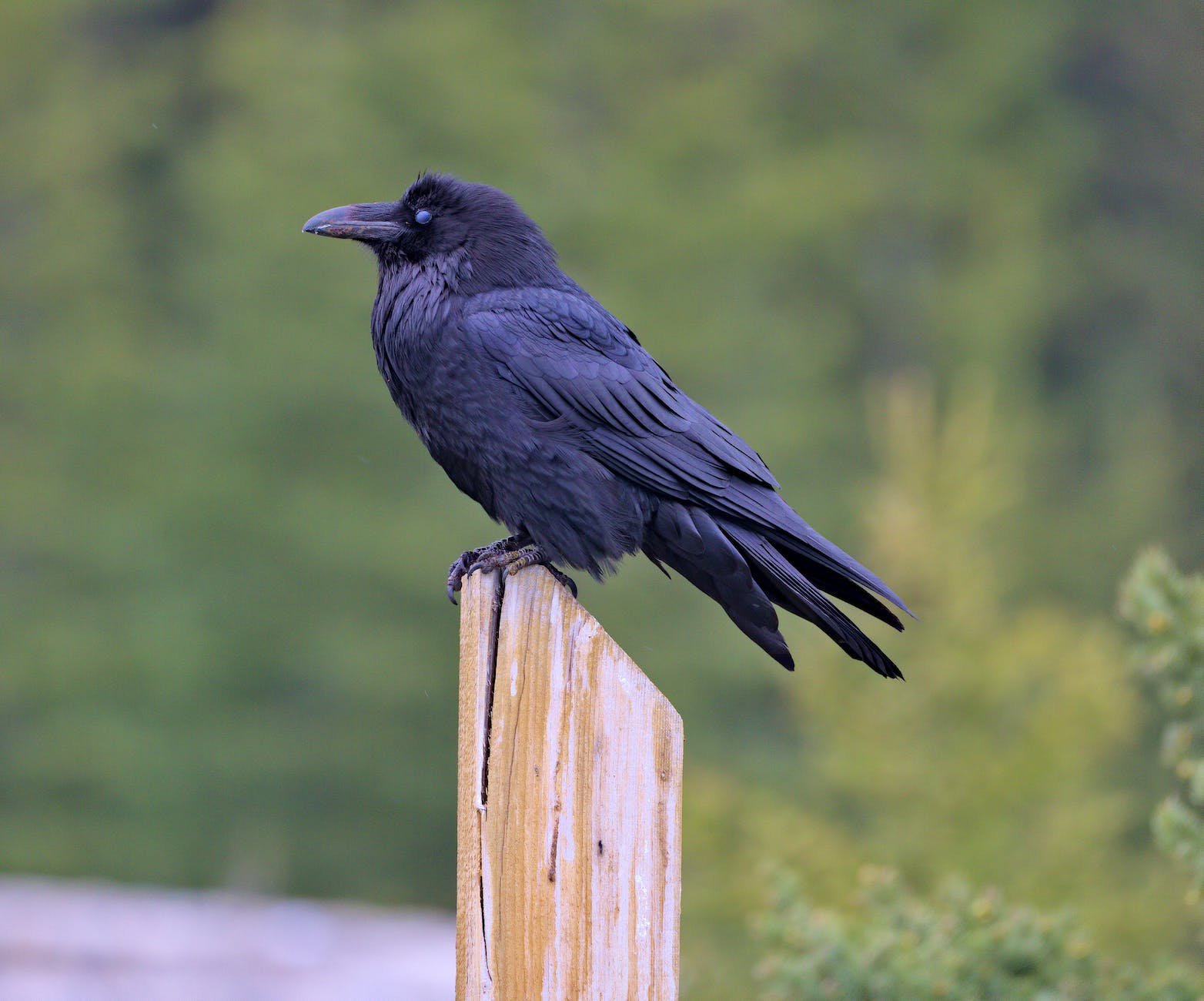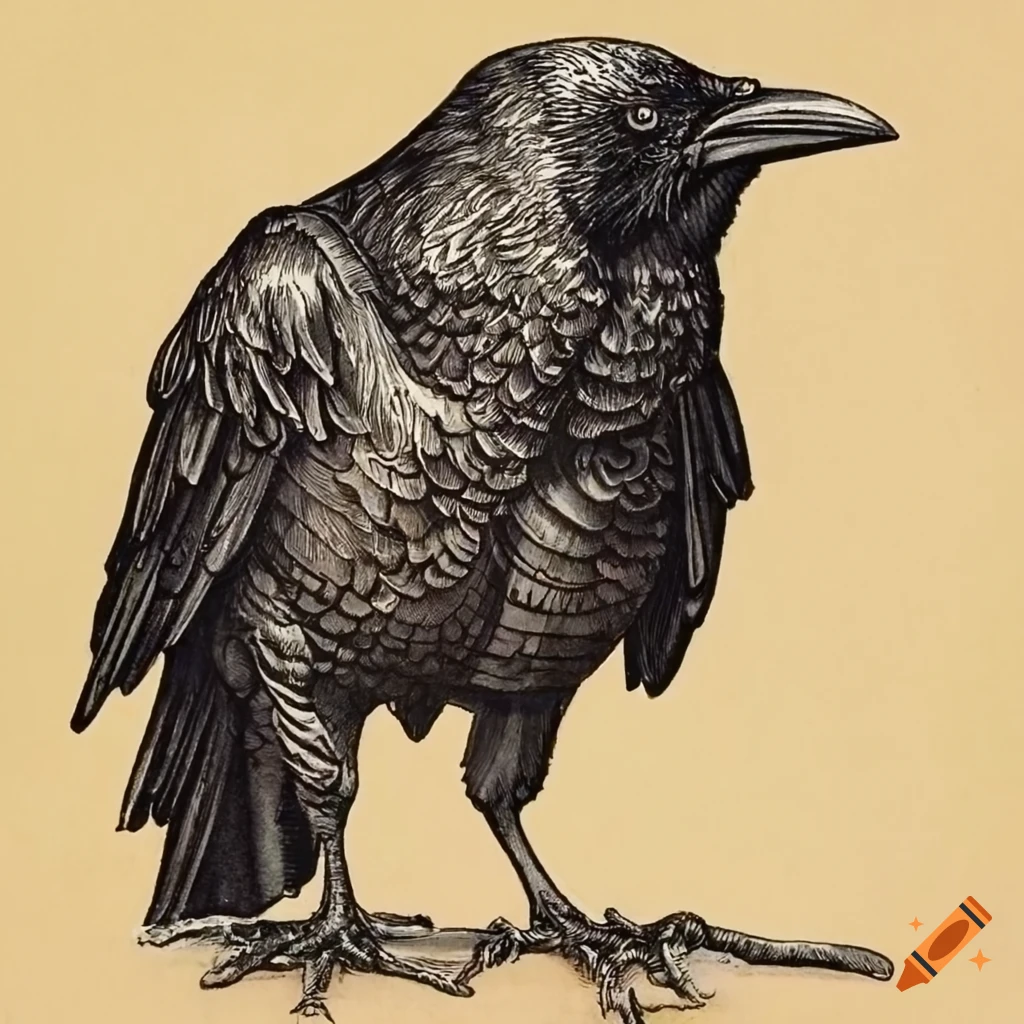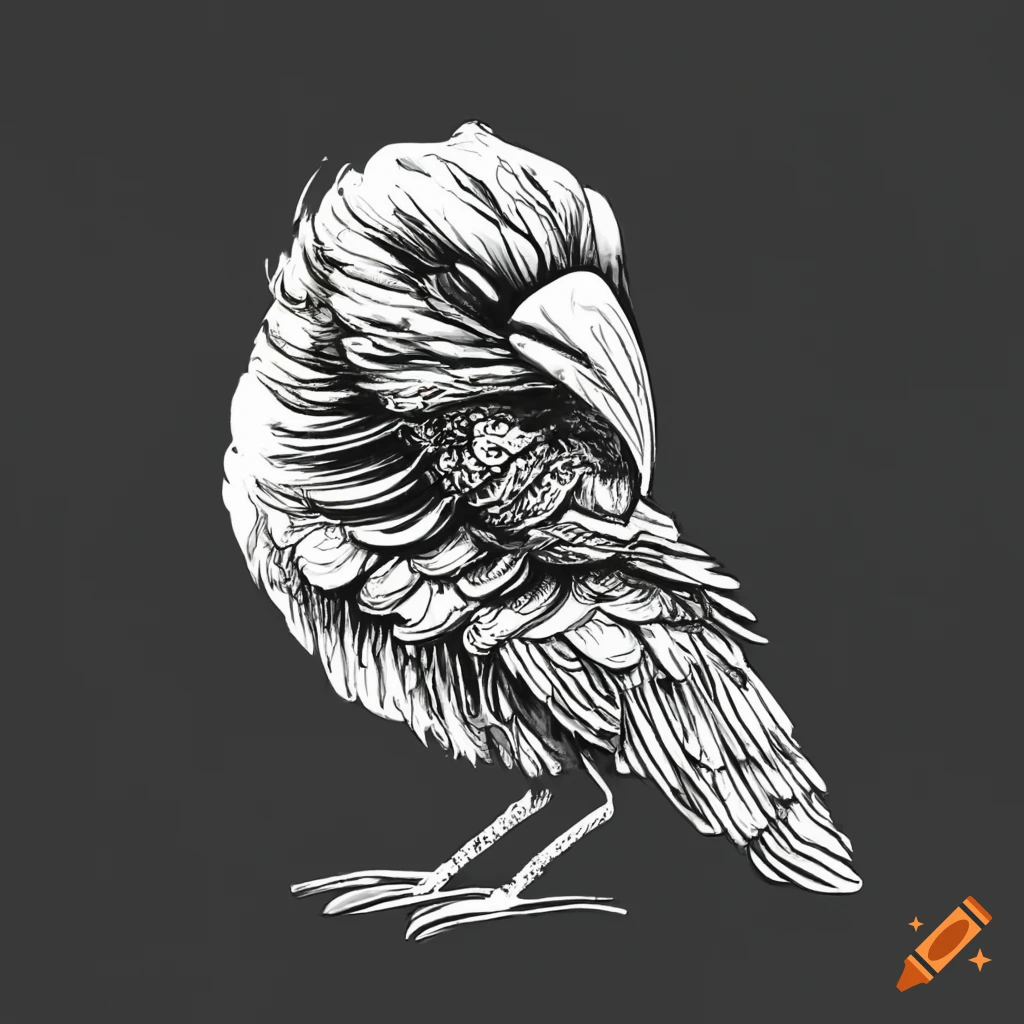The Fascinating American Crow: Insights into Corvus Brachyrhynchos Brehm, CL, 1822
December 30, 2023 | by BlackCrow.com

The American Crow: A Fascinating Bird
The American Crow, scientifically known as Corvus brachyrhynchos Brehm, CL, 1822, is a captivating bird that has long intrigued bird enthusiasts and researchers alike. This section will provide an introduction to the American Crow and explore its physical characteristics.
Introduction to the American Crow
The American Crow is a member of the Corvidae family, which includes other intelligent and social birds such as ravens, jays, and magpies. It is widely distributed throughout the United States, southern Canada, and northern Mexico, making it a familiar sight in many urban, suburban, and rural areas.
Known for its distinctive black plumage, the American Crow is a medium-sized bird with a length ranging from 17 to 21 inches (43 to 53 centimeters) and a wingspan of approximately 33 to 39 inches (84 to 99 centimeters). Its vocalizations, behavior, and adaptability have earned it a significant place in folklore and cultural representations.
Description and Physical Characteristics
The American Crow has a robust build with a stout bill and strong legs. Its feathers are entirely black, including the plumage on its head, body, and wings. The feathers possess a glossy sheen, which enhances the crow’s striking appearance. Males and females have similar physical features, making it challenging to distinguish between the sexes based on appearance alone.
One notable characteristic of the American Crow is its eyes. They are relatively large and have a dark brown to black coloration. These keen eyesight, combined with their intelligence, allow crows to spot potential sources of food and potential predators from a distance.
To further explore the fascinating world of the American Crow, continue reading about its habitat, behavior, intelligence, and more in the subsequent sections of this article.
Habitat and Distribution
The American Crow (Corvus brachyrhynchos Brehm, CL, 1822) is a species of bird that is native to North America. It has a wide range and can be found throughout various regions of the United States, southern Canada, and northern Mexico.
Range of the American Crow
The American Crow has a vast distribution range, spanning across different geographical areas. It can be commonly found in the following regions:
- United States: The American Crow is present throughout the entire United States, from the Atlantic coast to the Pacific coast. It is a familiar sight in both urban and rural environments.
- Southern Canada: The range of the American Crow extends into southern Canada, particularly in the provinces of Ontario, Quebec, and British Columbia. They can be found in both urban and forested areas.
- Northern Mexico: The American Crow also occurs in the northern regions of Mexico, including states such as Baja California, Sonora, and Chihuahua. They are adaptable to various habitats, including desert and semi-arid regions.
Habitat Preferences
The American Crow is a highly adaptable species when it comes to habitat selection. They can be found in a wide range of environments, including:
- Forests: American Crows are commonly found in both deciduous and coniferous forests. They utilize the trees for nesting, roosting, and foraging for food.
- Urban Areas: These intelligent birds have successfully adapted to urban environments, including cities, towns, and suburban areas. They can often be seen foraging in parks, gardens, and even dumpster diving for food.
- Agricultural Land: American Crows are known to inhabit agricultural areas such as farmlands, fields, and pastures. They are opportunistic feeders and can scavenge on crops and insects found in these areas.
- Coastal Areas: In coastal regions, American Crows can be found near shorelines, marshes, and estuaries. They may feed on marine invertebrates and carrion washed up on the beach.
The adaptability of the American Crow to different habitats contributes to its widespread distribution. Whether in urban, rural, or natural environments, these birds have found ways to thrive and coexist with human activities.
Understanding the habitat and distribution of the American Crow provides valuable insights into the behavior and ecology of this fascinating bird. For more information on the American Crow and other related species, explore our articles on black crow and corvids.
Behavior and Social Structure
Understanding the behavior and social structure of the American Crow provides valuable insights into the life of this fascinating bird.
Diet and Feeding Habits
The American Crow is an omnivorous bird with a diverse diet. It feeds on a wide variety of food sources, including insects, small mammals, amphibians, reptiles, fruits, seeds, and carrion. This adaptability in food preference allows the American Crow to thrive in a range of habitats.
To locate food, crows use their keen eyesight and intelligence. They often forage on the ground or in trees, using their strong beaks to probe and manipulate objects. Crows are known to be highly opportunistic, taking advantage of available food sources in both urban and natural environments.
Communication and Vocalizations
Crows are highly vocal birds and possess a wide range of vocalizations. They use different calls and sounds to communicate with each other, conveying various messages and warnings. Crows have distinct calls for different situations, such as alarm calls to alert others of potential threats or gathering calls to communicate with their flock.
Their vocal repertoire includes caws, rattles, clicks, and even mimicry of other bird species. Vocalizations play a crucial role in maintaining social bonds, coordinating group activities, and defending territories.
Social Behavior and Family Structure
American Crows are social birds that form strong family bonds. They typically live in small family groups consisting of a breeding pair and their offspring from previous years. These blackcrow family groups often join larger flocks, forming communal roosts during the non-breeding season.
Within the family group, the breeding pair takes on the primary responsibility of nesting and raising young. Crows are monogamous and form long-term pair bonds. They engage in cooperative breeding, where other family members help with nest building, incubation, and feeding of the young.
Crows also exhibit territorial behavior, defending their nesting territories from intruders. They are known to engage in aggressive interactions with other birds and animals that encroach upon their territory.
Understanding the black crow behavior and social structure of the American Crow provides a deeper appreciation for the complexity of their lives. From their omnivorous diet and diverse feeding habits to their extensive vocal repertoire and strong family bonds, these birds showcase remarkable adaptability and intelligence.
Intelligence and Adaptability
The American Crow, scientifically known as Corvus brachyrhynchos Brehm, CL, 1822, is a highly intelligent and adaptable bird species. Its cognitive abilities, tool use and problem-solving skills, as well as its ability to thrive in urban environments, make it a fascinating creature to study.
Cognitive Abilities
The American Crow possesses remarkable cognitive abilities, showcasing its intelligence. It has been observed to exhibit complex problem-solving skills, including tool use and manipulation. These birds have been known to fashion tools from twigs, use sticks to extract food from crevices, and even drop nuts onto hard surfaces to crack them open.
Furthermore, American Crows demonstrate a high level of social intelligence. They can recognize individual humans, remember faces, and communicate information about potential threats to their fellow crows. Their ability to problem-solve and adapt their behavior to changing situations is a testament to their cognitive capabilities.
Tool Use and Problem Solving
One of the most intriguing aspects of the American Crow’s intelligence is its ability to use tools. These birds have been observed using a variety of objects as tools to obtain food. For example, they have been seen using sticks to extract insects from tree bark or using stones to crack open nuts. This tool use demonstrates their advanced problem-solving skills and adaptability in finding creative solutions to challenges they encounter in their environment.
Additionally, American Crows have been observed engaging in cooperative problem-solving. They work together to tackle complex tasks, such as opening a difficult food source or defending their territory against predators. This behavior showcases their ability to communicate and collaborate effectively.
Adaptability to Urban Environments
The American Crow is highly adaptable and has successfully adapted to urban environments. It has shown a remarkable ability to thrive in cities and suburban areas, utilizing human-made structures and resources to its advantage. This adaptability is due in part to the crow’s intelligence and problem-solving skills, allowing it to navigate and exploit urban landscapes.
In urban environments, American Crows have been observed scavenging for food, nesting on buildings, and even using traffic to crack open nuts. They have adapted their behavior to take advantage of human activities and resources, showcasing their ability to thrive even in non-traditional habitats.
The intelligence and adaptability of the American Crow make it a fascinating species to study and appreciate. Its cognitive abilities, problem-solving skills, and ability to adapt to various blackcrow environments contribute to its success as a highly adaptable bird. Understanding the remarkable traits of the American Crow provides insights into the complexity and adaptability of avian species.
Conservation Status and Threats
Understanding the conservation status and threats faced by the American Crow (Corvus brachyrhynchos Brehm, CL, 1822) is crucial for ensuring the long-term survival of this fascinating bird species.
Population Trends
The population of American Crows has remained relatively stable over the years. According to the International Union for Conservation of Nature (IUCN) Red List, the species is currently listed as “Least Concern.” However, localized declines have been observed in some regions due to habitat loss, urbanization, and other factors.
Threats to the American Crow
While the American Crow population is generally stable, it faces several threats that can impact its survival and well-being. These threats include:
- Habitat Loss: Destruction of nesting and foraging habitats due to urbanization, deforestation, and agricultural expansion can reduce the availability of suitable areas for American Crows.
- Nest Predation: American Crows face predation of their nests and eggs by other bird species and predators such as raccoons and squirrels.
- Pesticides and Contaminants: Exposure to pesticides, heavy metals, and other contaminants in their environment can have detrimental effects on the health and reproductive success of American Crows.
- Collision with Man-Made Structures: Collisions with buildings, vehicles, and power lines pose a significant threat to American Crows, leading to injuries and fatalities.
- Disease Outbreaks: Outbreaks of avian diseases, such as West Nile virus, can impact the population of American Crows.
Conservation Efforts
To mitigate the threats faced by the American Crow, various conservation efforts have been implemented. These include:
- Habitat Protection: Protecting and conserving suitable habitats for American Crows, including forests, woodlands, and urban green spaces, can help maintain viable populations.
- Nest Box Programs: Installing nest boxes in suitable locations can provide additional nesting opportunities for American Crows and help offset the loss of natural nesting sites.
- Education and Awareness: Raising awareness about the importance of American Crows and their conservation needs among the public, landowners, and policymakers can contribute to their protection.
- Research and Monitoring: Conducting research on American Crow populations, their behavior, and habitat requirements helps inform conservation strategies and monitor population trends.
Efforts to conserve the American Crow should be ongoing to ensure the species’ long-term survival. By addressing the threats and implementing conservation measures, we can help maintain healthy populations of this remarkable bird species.
For more information on other crow species, such as the Pied Crow (Corvus albus Müller, PLS, 1776) black crow and the White-Necked Raven (Corvus albicollis Latham, 1790), check out our articles on Pied Crow and White-Necked Raven.
Interesting Facts about the American Crow
The American crow, scientifically known as Corvus brachyrhynchos Brehm, CL, 1822, is a remarkable bird with a rich history and fascinating behaviors. In this section, we will explore some interesting facts about the American crow, including its cultural significance and folklore, unique behaviors and adaptations, and fun trivia.
Cultural Significance and Folklore
Throughout history, the American crow has held cultural significance in various societies. In Native American folklore, the crow is often portrayed as a trickster figure, known for its intelligence and cunning. It is believed to possess wisdom and the ability to shape-shift. Crows are also associated with symbols of good luck.
Unique Behaviors and Adaptations
The American crow exhibits several unique behaviors and adaptations that contribute to its survival and success. Here are a few noteworthy examples:
- Tool Use: American crows have been observed using tools in the wild. They can fashion tools from various materials to aid in foraging, such as using sticks to extract insects from tree crevices. This ability demonstrates their problem-solving skills and adaptability.
- Mobbing Behavior: American crows are highly social birds and exhibit mobbing behavior. When they encounter a potential threat, such as a predator or intruder, they will gather in large numbers and vocalize loudly while flying around the perceived threat. This behavior is thought to deter predators and protect their territory.
- Vocalizations: The American crow is known for its diverse repertoire of vocalizations. They have a range of calls, including distinct caws, rattles, and clicks. These vocalizations are used for communication within their social groups and to convey different messages, such as warning others of potential dangers or sharing information about food sources.
Fun Facts and Trivia
Here are some fun facts and trivia about the American crow:
- The American crow is a highly adaptable species and can be found in a wide range of habitats, from urban areas to forests and agricultural fields.
- They are excellent problem solvers and have demonstrated the ability to recognize individual human faces, remembering both positive and negative interactions.
- American crows are omnivorous, meaning they have a varied diet that includes insects, small mammals, eggs, fruits, seeds, and carrion.
- These intelligent birds have the ability to remember specific black-crow locations where they have found food, allowing them to revisit these sites later.
- American crows are known for their longevity, with some individuals living up to 14 years in the wild.
- They are highly adaptable to urban environments and can thrive in cities, often scavenging for food in garbage bins and utilizing tall buildings for roosting.
The American crow is a captivating bird with its cultural significance, unique behaviors, and interesting trivia. Exploring these aspects of the American crow helps us appreciate the remarkable qualities of this species.
RELATED POSTS
View all


